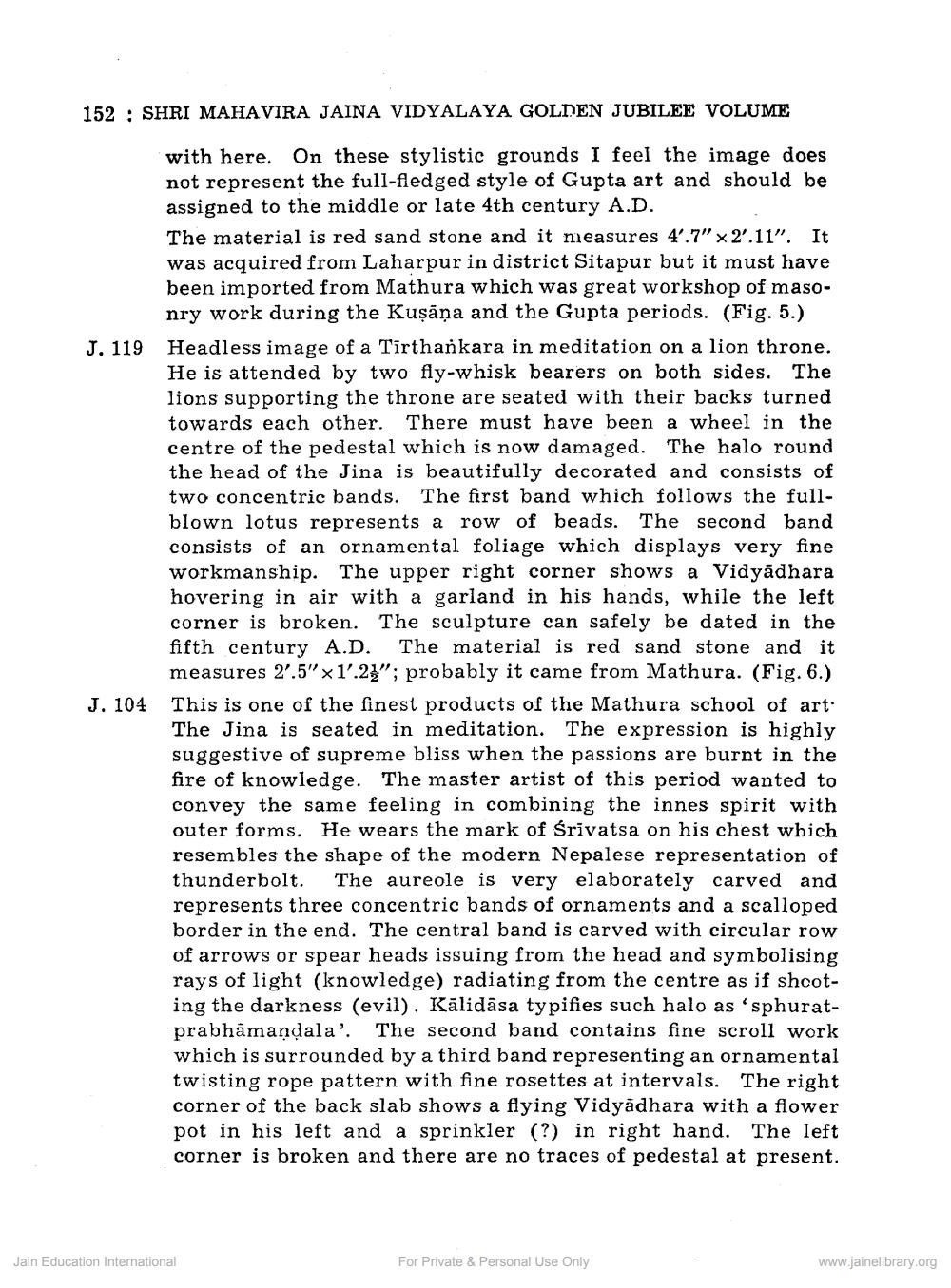________________ 152 : SHRI MAHAVIRA JAINA VIDYALAYA GOLDEN JUBILEE VOLUME with here. On these stylistic grounds I feel the image does not represent the full-fledged style of Gupta art and should be assigned to the middle or late 4th century A.D. The material is red sand stone and it measures 4'.7" X 2'.11". It was acquired from Laharpur in district Sitapur but it must have been imported from Mathura which was great workshop of masonry work during the Kusana and the Gupta periods. (Fig. 5.) Headless image of a Tirthankara in meditation on a lion throne. He is attended by two fly-whisk bearers on both sides. The lions supporting the throne are seated with their backs turned towards each other. There must have been a wheel in the centre of the pedestal which is now damaged. The halo round the head of the Jina is beautifully decorated and consists of two concentric bands. The first band which follows the fullblown lotus represents a row of beads. The second band consists of an ornamental foliage which displays very fine workmanship. The upper right corner shows a Vidyadhara hovering in air with a garland in his hands, while the left corner is broken. The sculpture can safely be dated in the fifth century A.D. The material is red sand stone and it measures 2'.5' x1'.21"; probably it came from Mathura. (Fig. 6.) This is one of the finest products of the Mathura school of art. The Jina is seated in meditation. The expression is highly suggestive of supreme bliss when the passions are burnt in the fire of knowledge. The master artist of this period wanted to convey the same feeling in combining the innes spirit with outer forms. He wears the mark of Srivatsa on his chest which resembles the shape of the modern Nepalese representation of thunderbolt. The aureole is very elaborately carved and represents three concentric bands of ornaments and a scalloped border in the end. The central band is carved with circular row of arrows or spear heads issuing from the head and symbolising rays of light (knowledge) radiating from the centre as if shooting the darkness (evil). Kalidasa typifies such halo as 'sphuratprabhamandala'. The second band contains fine scroll work which is surrounded by a third band representing an ornamental twisting rope pattern with fine rosettes at intervals. The right corner of the back slab shows a flying Vidyadhara with a flower pot in his left and a sprinkler (?) in right hand. The left corner is broken and there are no traces of pedestal at present. J. 104 Jain Education International For Private & Personal Use Only www.jainelibrary.org




